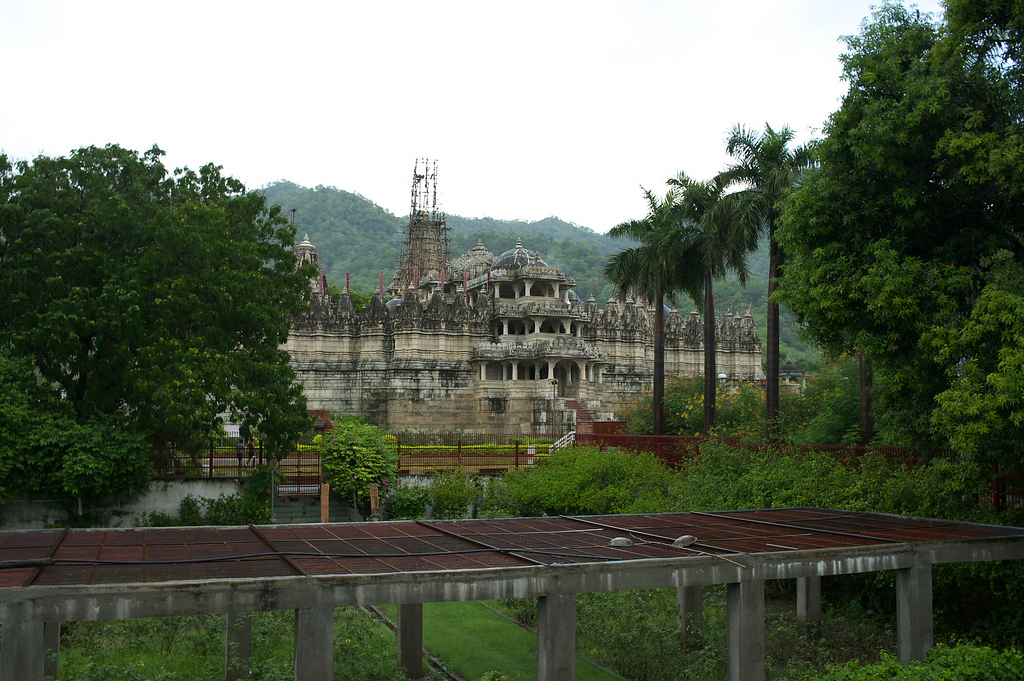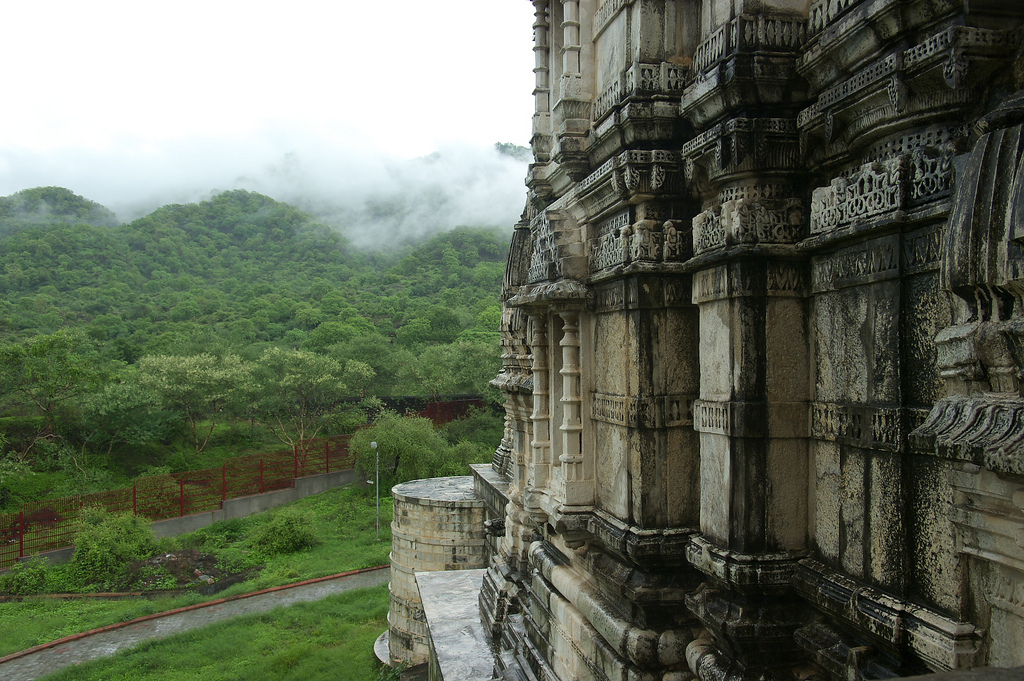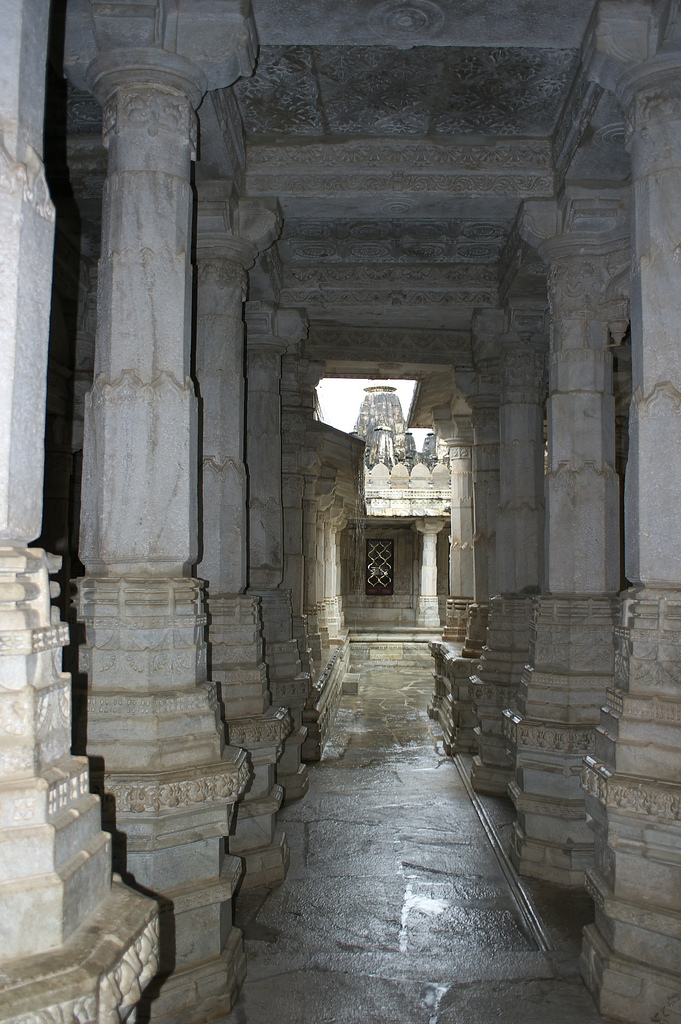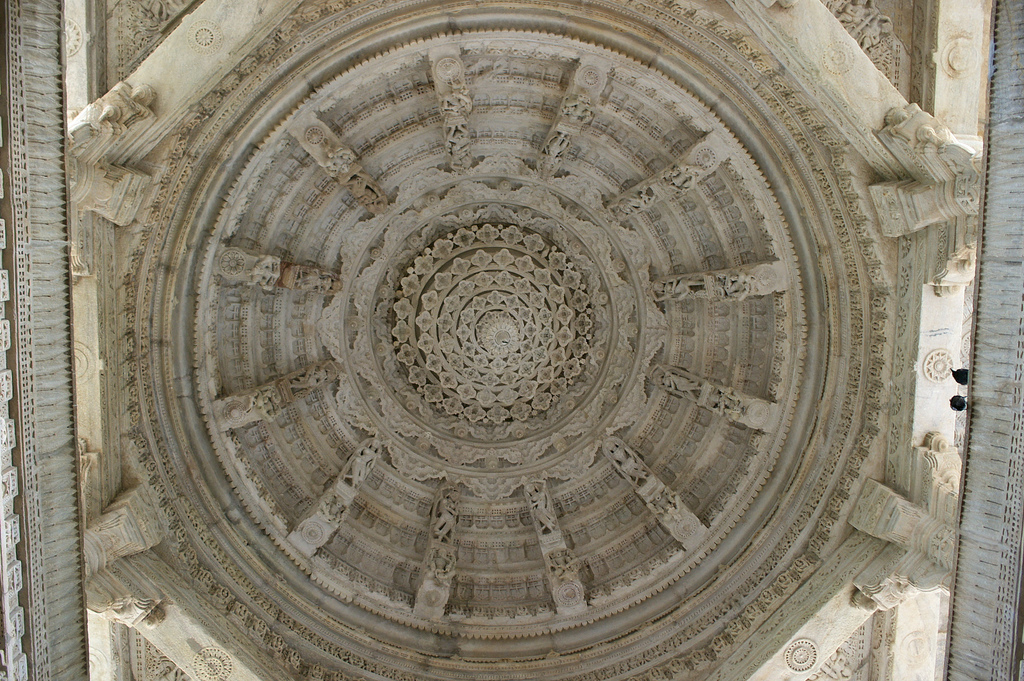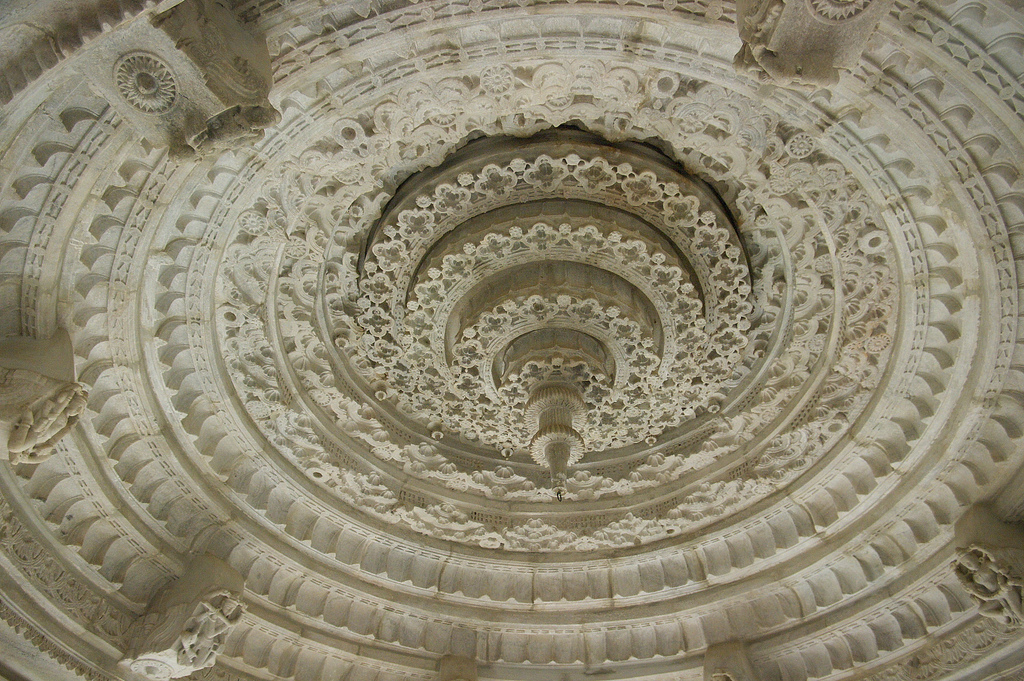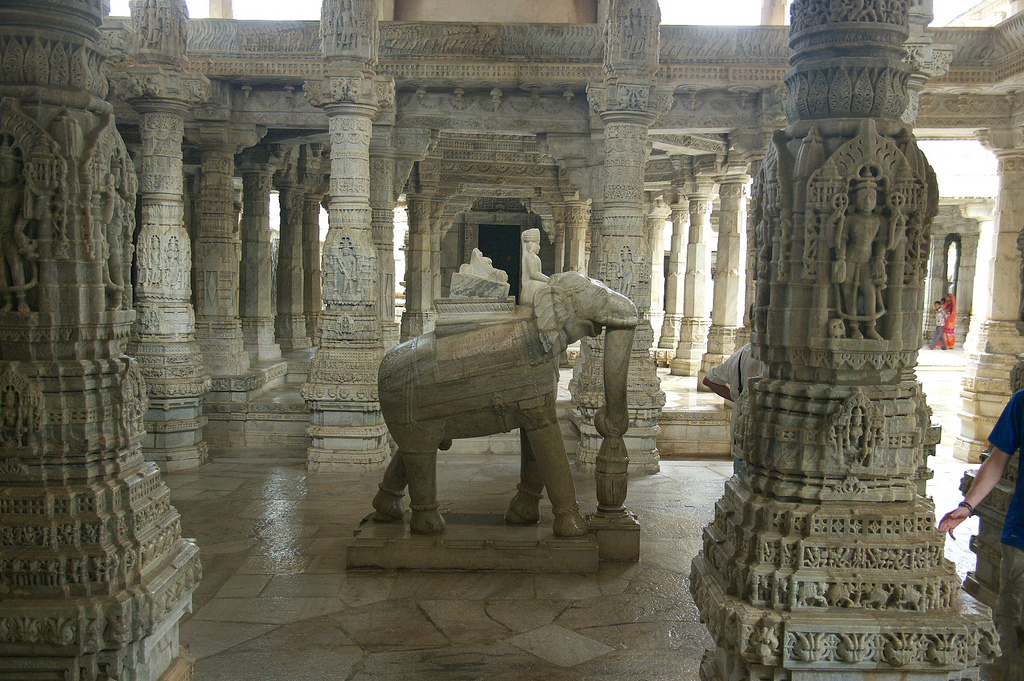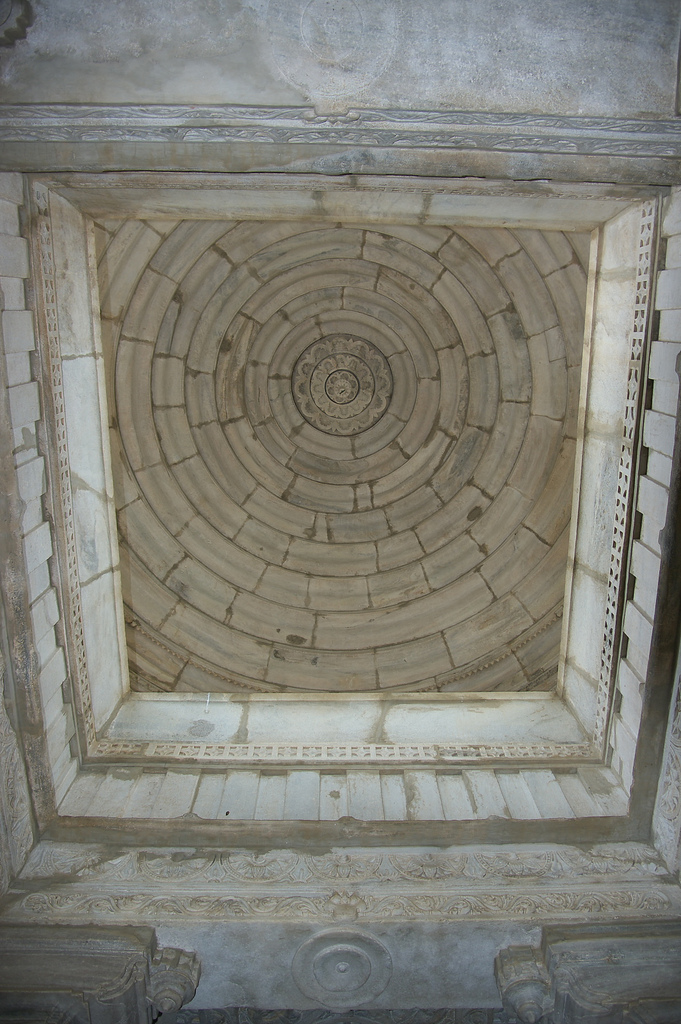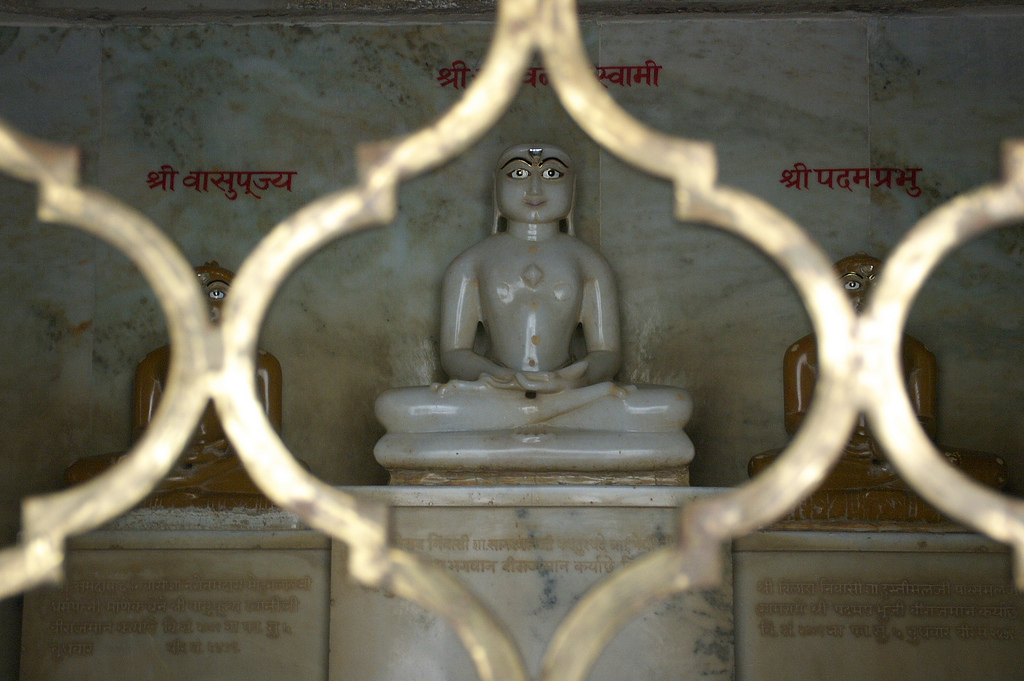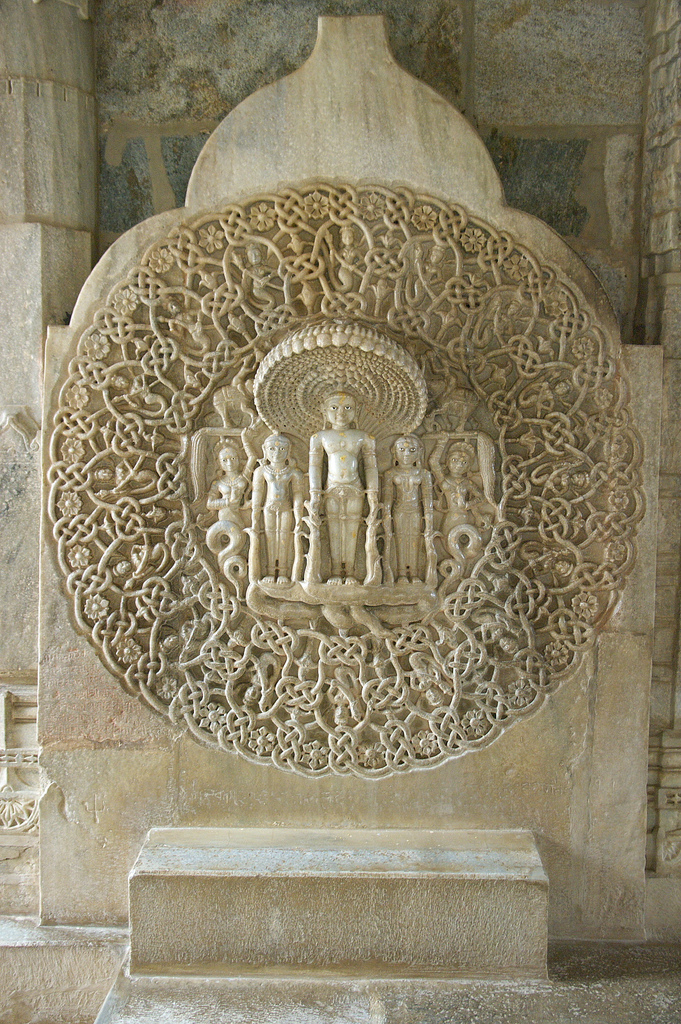Adinatha Temple at Ranakpur
The Adinatha Temple of Ranakpur is also named Dharna Vihara temple after its builder. The impression it conveys is very different from that of the Dilwara temples. In the Dilwara temples, the atmosphere is one of peace and seclusion; this engendered by the smallness of the temples as well as by the illusion of their being hidden and concealed. In comparison, the temple at Ranakpur is grandiose and majestic, it has soaring shikhara towers and domes visible from a great distance.
This difference in style is due to the Adinatha temple being constructed later. In the 14th century, the Muslim assaults, which had ravaged the country for so long, were abating. After recovering from the shock and devastation of these attacks, old values were in general abandoned and architectural conception and planning took on an entirely new dimension.
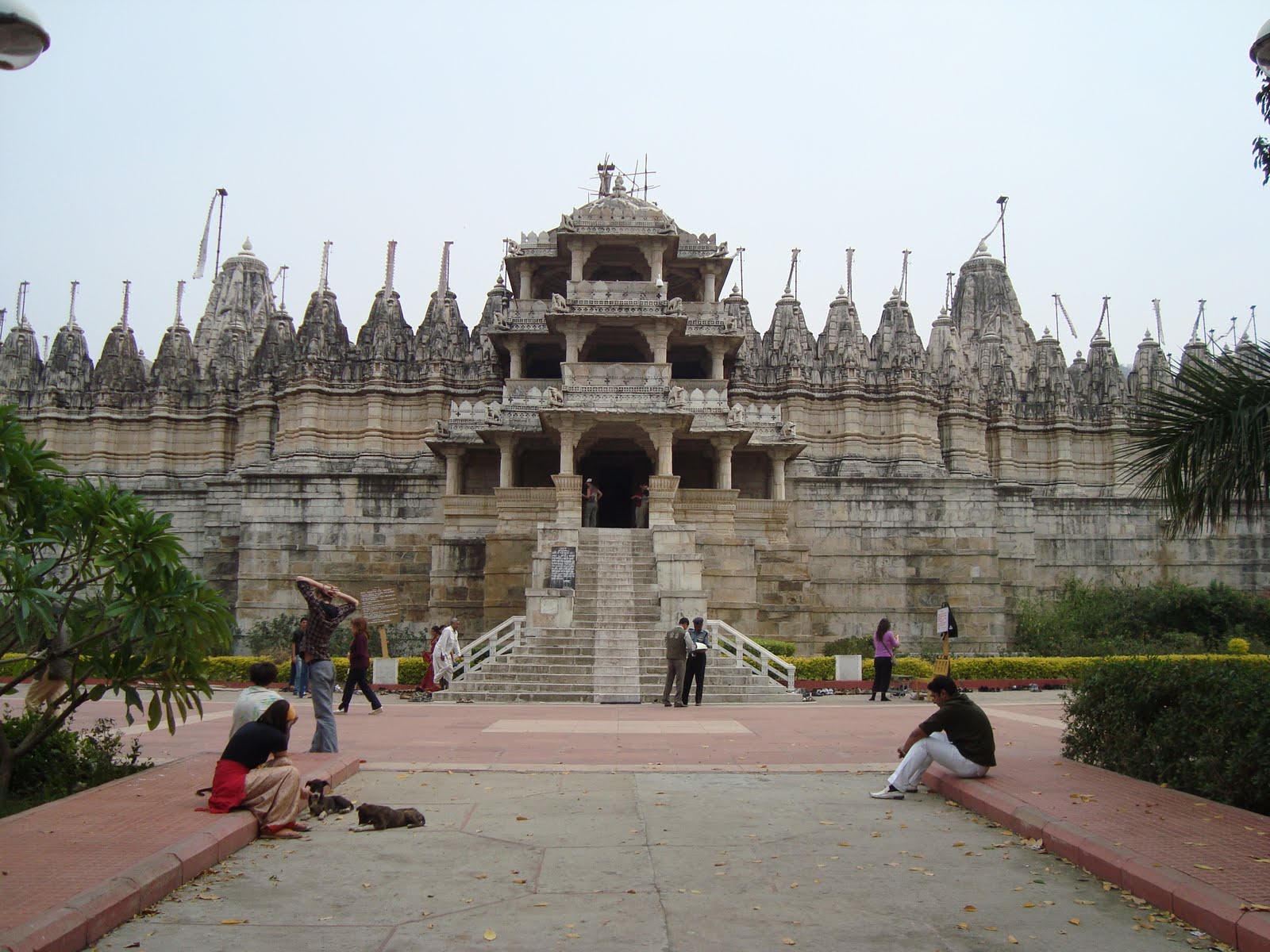
Around the same time, the kingdom of Mewar reached the zenith of its power. Under Rana Kumbha (1433-68), the kingdom grew to the size almost of an empire. The buildings reflected the growing power of the rulers, especially in the capital city of Chittaurgarh. In Ranakpur, there is an inscription immortalising the king, which seems to demonstrate that he wished to associate the dynastic glory with this mighty temple. Unlike Mt. Abu, in Ranakpur we see a royal monument, which undoubtedly contributed to the grandeur of the place.
Dharna Shah and Construction of the Temple
The builder of the shrine, Dharna Shah belonged to a Rajasthani Jain family that held the title of Sanghapati (one who has borne the costs of the community pilgrimage). The name Shah or Sah indicates that he accumulated his wealth as a banker or as a merchant.

According to Jain tradition, Dharna Shah gained the confidence of the king and was appointed minister. At the age of thirty-two years, however, greatly influenced by the sermons of the monk Shri Somasundara Suriji, he retired from the world to practise celibacy. In a dream, he saw a marvellous heavenly vehicle, the nalini-gulm-vimana (lotus flight), which impressed him so much that he suggested his idea to the king that he wanted to construct a temple in this shape. The Rana agreed and donated land for the temple and township.
However, it was not as simple to execute the temples plan: fifty architects were not in a position to fulfil Dharna’s wish of combining the nalini-gulm-vimana with a chaturmukha-temple (a temple with a “four-faced” image of the Tirthankara, facing the four cardinal directions). The later concept was important for him in order to emulate the famous Raj Vihara temple of King Kumarapala (refer to chapter on the history of the Jains). Finally, in Depaka, an architect from a neighbouring village, he found the man to bring this project to reality.

The temple is said to having been begun in 1377 or 1387, depending on the source consulted. It has tradition that the main structure of the temple finally was inaugurated in 1441 in the presence of Dharna Shah and his teacher, Somasundara Suriji. However, there is something odd about the story, for if it took fifty-four or sixty-four years to construct the temple, at which point Dharna Shah must have been at least eighty-six years and his guru even older. The only source, which definitely dates to the time of the inauguration, is a forty-seven line inscription in Sanskrit. This is located on a pillar to the left of the entrance. The Jain sources go back at best to the 17th or 18th century.

The inscription of 1439 states Dharna Shah as the builder and Depaka as the architect. Nevertheless, the inscription is a typical example of a royal inscription from that period, glorifying Kumbha and his forty predecessors; this kind of inscription would be extremely rare if the king was not himself involved in the construction of the temple, as either donor or patron. In fact, it is stated at the end of the inscription that ‘... King Rana Shri Kumbhakarna, established in his (Kumbhakarna’s) own name, (the temple) of the first Lord of the Yuga, “Shri Chaturmukha” - known as Trilokya-di-paka; (the temple) was constructed by his grace and on his orders in the city of Ranakpur and it was inaugurated by Shri Soma-Sundarsuri’. In this inscription, Rana Kumbha introduces himself as the main initiator of the project. The king had reigned only for seven years at the time the inscription was carved, but keeping in mind that at that point of time only a minute part of the whole complex, which was huge, had been completed. It is possible that the construction existing at that point of time had indeed been undertaken and completed during Kumbha’s reign. A comparison of this temple with the other projects of this ruler, who was a building enthusiast, merely confirms the possibility of having been built during his reign.
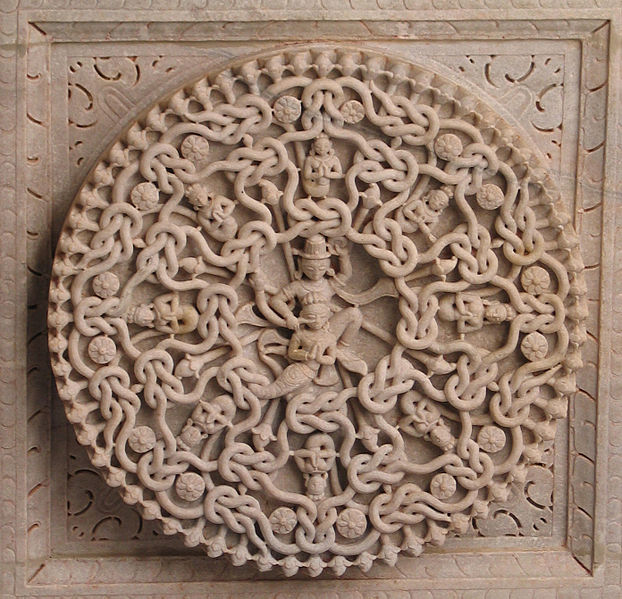
What is puzzling is the information contained in sources belonging to a later period that sixty-four years were required for the construction of the temple, but perhaps these refer to the length of time required as a whole for its completion. The Adinatha temple of Ranakpur is situated in a valley on the western flank of the Aravalli hills between Jodhpur and Udaipur. Its vast area of 60 x 62 m is reminiscent of the size of a Gothic cathedral. Light coloured marble from the quarries of Sonana and Sewadi was used for the construction. This marble does not achieve the same radiant whiteness as in Mt. Abu. Typical of Jain architecture is the high boundary wall erected on an elevated foundation, known as the adisthana; this is a characteristic of the 15th century. Since the temple is situated on the slope of a hill on the western flank, the plinth at the main entrance in the west has been constructed visibly higher. Innumerable shikhara towers, small shikharas, cupolas and pyramids soar above the ensemble. They symbolise the lotus-flight-vehicle seen in Dharna Shah’s dream. The tiny bells in the turrets form a charming contrast to the hugeness of the complex. The chiming of the bells at the slightestbreeze recalls the serenity and peace, which said to engulf the soul on stepping into the temple.

The later history of Ranakpur
During the reign of Aurangzeb (1658-1707), Muslim armies advanced through Mewar and pillaged Ranakpur. In later centuries, famines decimated the population in the surrounding area. The temple, which in parts had collapsed, was abandoned and for a time it became a hideout for gangs of robbers.
It was only at the close of the 19th century that devout Jains returned to the site. One Seth Hemabhai Hattisingh from Ahmedabad had the shrine purified, and constructed a boundary wall. Since 1897, it has been under the jurisdiction of the trust of Seth Anandji Kalyanji in Ahmedabad. The Seth showed great sensitivity whilst restoring Ranakpur in 1933-44.
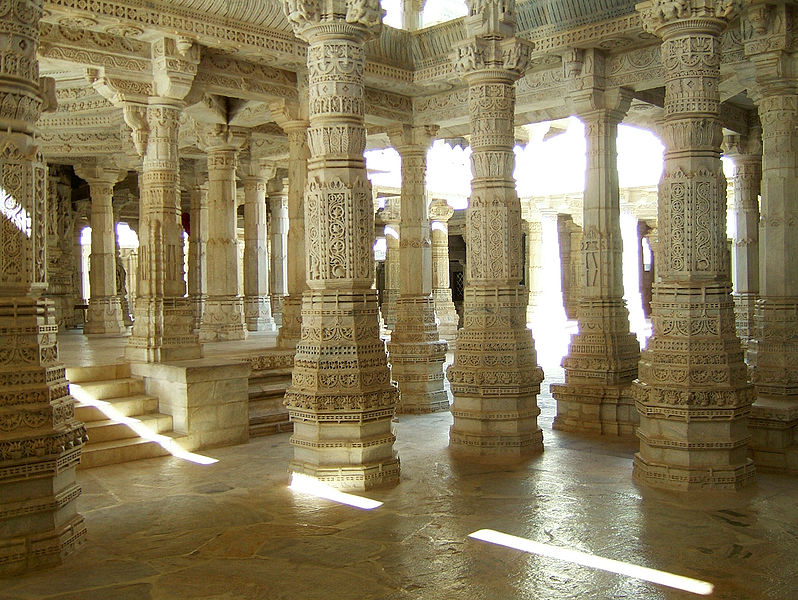
Ground plan of the Adinatha Temple
The Adinatha temple conceived of as a chatur-mukha-prasada, i.e., the idol faces all four cardinal directions. This necessitates a cell (garbha griha, no. 1 in the plan) with four doorways. The Sanctum is surrounded by halls, which are known as either the sabha mandapa (assembly halls) or ranga mandapa (dance halls, no. 2 in the plan).

The one on the western side is prominent due to its size in the axis of the main entrance. As a result, the cell is placed a little to the east; this accounts for the ground plan not being a perfect square. The central area of the temple is in the form of a crucifix and encircled by an open rectangular courtyard (no. 3 in the plan); in comparison with older Jain temples, the courtyard here does not have much of the prominence.
Impressions of Ranakpur
(photos by CdeHaan)
